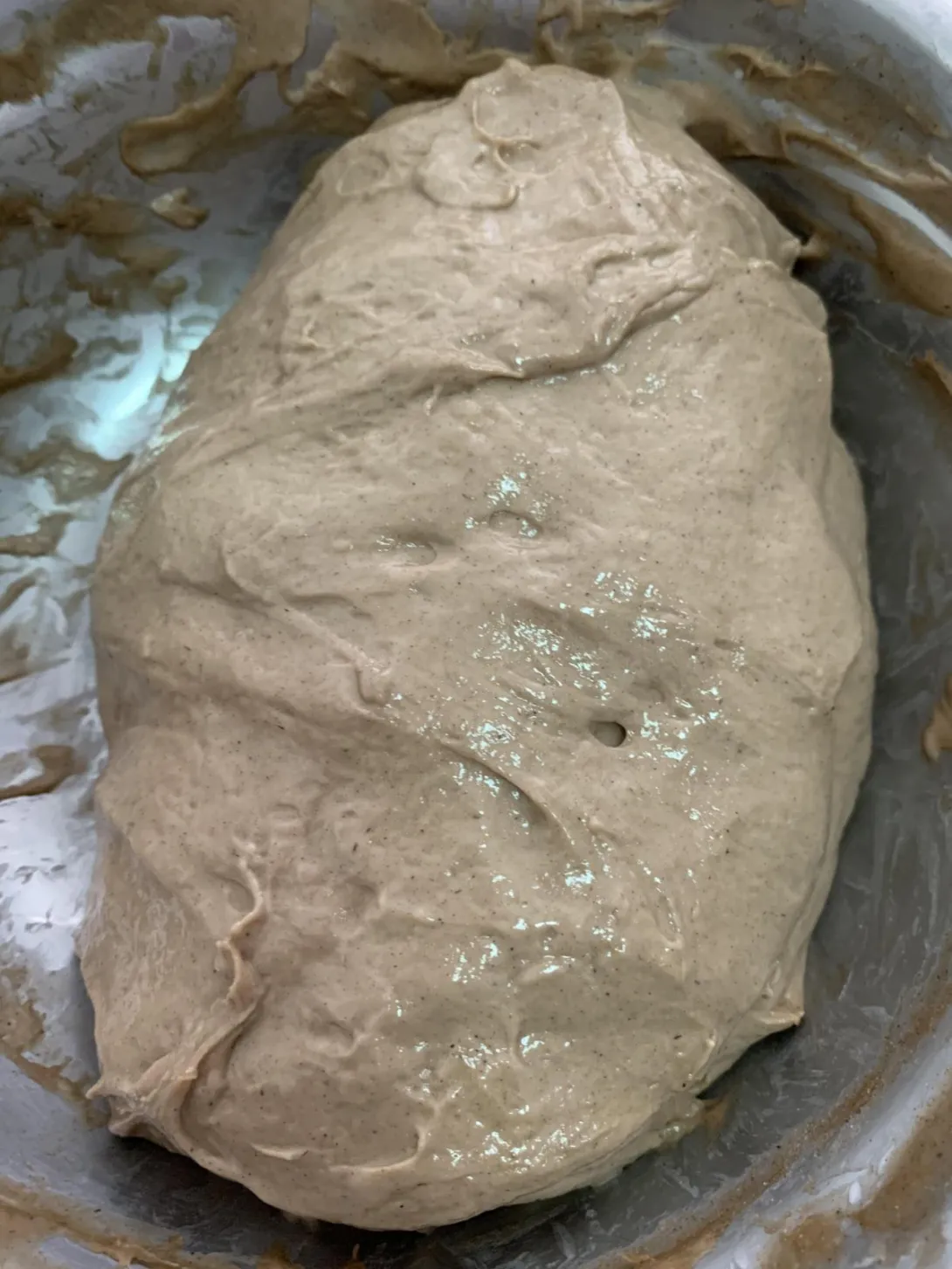
Hi,
I have been trying to bake sourdough and have never succeeded. I tried with all purpose flour and mixed rye and all purpose flour. I read online that I can use using all purpose flour making sourdough.
All Purpose Flour
I did 70% hydration with 100% all purpose flour. Dough was shaggy, very wet and sticky. During bulk fermentation, I did 4 hours in room temperature and sf every 30 minutes, then retard 10 hours in the fridge. I think the water content is high. But nonetheless the dough has very little gas, almost like a deflated cola. From what I can see, there is no gluten development. I tasted the dough, it was sour. But smelling fresh.
Dark Rye and All Purpose Flour
I reckon 100% all purpose flour cannot absorb high water content. So this time I used 40% dark rye flour and 60% all purpose flour. I used 70% hydration. Dough is now able to hold its shape, but during bulk fermentation, there was zero bubble. But still I left it in room temperature for 3 hours and retard 12 hours in the fridge. During bulk fermentation, I did sf I every 30 minutes.
This time I tasted the dough right before bulk fermentation, it tasted bland, expected because fermentation hasn’t occur. Then I tasted the dough again right after bulk fermentation, the dough tasted sour, but smelling fresh. After retard, I tasted the dough again, it was even more sour, but smelling fresh. Again zero bubble. The dough was very dense, like the picture above.
Starter
My starter has a lot of air pockets and raised 2 times of its size.
What happened? Help. I live in Singapore, very humid all year round.
gluten so that’s a high percentage of rye in your second recipe.
What’s the temperature that you are fermenting at? It could be too cool. If so a warm spot can be the oven with the light on. And go by the look of your dough rather than times to determine if your bulk fermentation is done.
Also using a bowl that is transparent might help you see if there are really any bubbles developing or not.
In the fridge, if it’s cold enough like mine, there is very little rise. However, the dough springs up nicely in the oven.
Oh one more thing. If your dough is too sticky, feel free to cut back some of the water. It could be that your flour just can’t handle that much.
How cold is cold enough do you think?
I checked ours yesterday and it was 9° C/48,2° F so I adjust it to 7° C/44.6° F.
That is way too warm for a fridge! The recommended temp is 40F or below. I keep mine at 38F. This might explain what happened to your dough in the fridge. It probably overproofed at those temps.
So if you didn’t let it rise enough during bulk and then it overproof in a warm fridge, it would explain a lot. A trick to deal with overproofed dough is to give it another quick shape, let it rise just a bit, maybe 25% at room temperature, and then bake it. You won’t get a great loaf but it still will be edible.
You said you folded every half hour for 4 hours. Only fold until you feel the dough holds nicely together after your folds. Then leave it alone for it to rise. You probably knocked all the gas out of your dough with the constant folds.
With the flour and method I use, I do 2 sets of folds 30 minus apart , then usually 2 sets of coil folds 45 minutes apart and then I leave it alone till it has risen about 30-40%. That’s what works for me. It may not for you. Check out one of my recipes on my blog on this site. I am pretty detailed on what to look for during bulk.
The original post is not mine.
It’s not! I guess I didn’t read all that carefully after all.
No problem.
I did had some overproving when I start doing the final rise in the fridge.
No I know why.
I never thought of checking it.
The last loaf is better al ready.
How much starter is in the recipe and how old is it?
Tell us about the starter, please. As much detail as you can. It sounds like the starter has low yeast counts but enough bacteria to make it taste sour tasting. It hasn't quite made the step from the bacteria stage to the yeasty stage. More about that later.
To save the dough add some instant yeast sprinkling it over the stretched out dough and kneading it in. Then again do some folding to distribute the softened yeast after it has dissolved. Aged dough makes good loaves too if the gluten hasn't broken down too much.